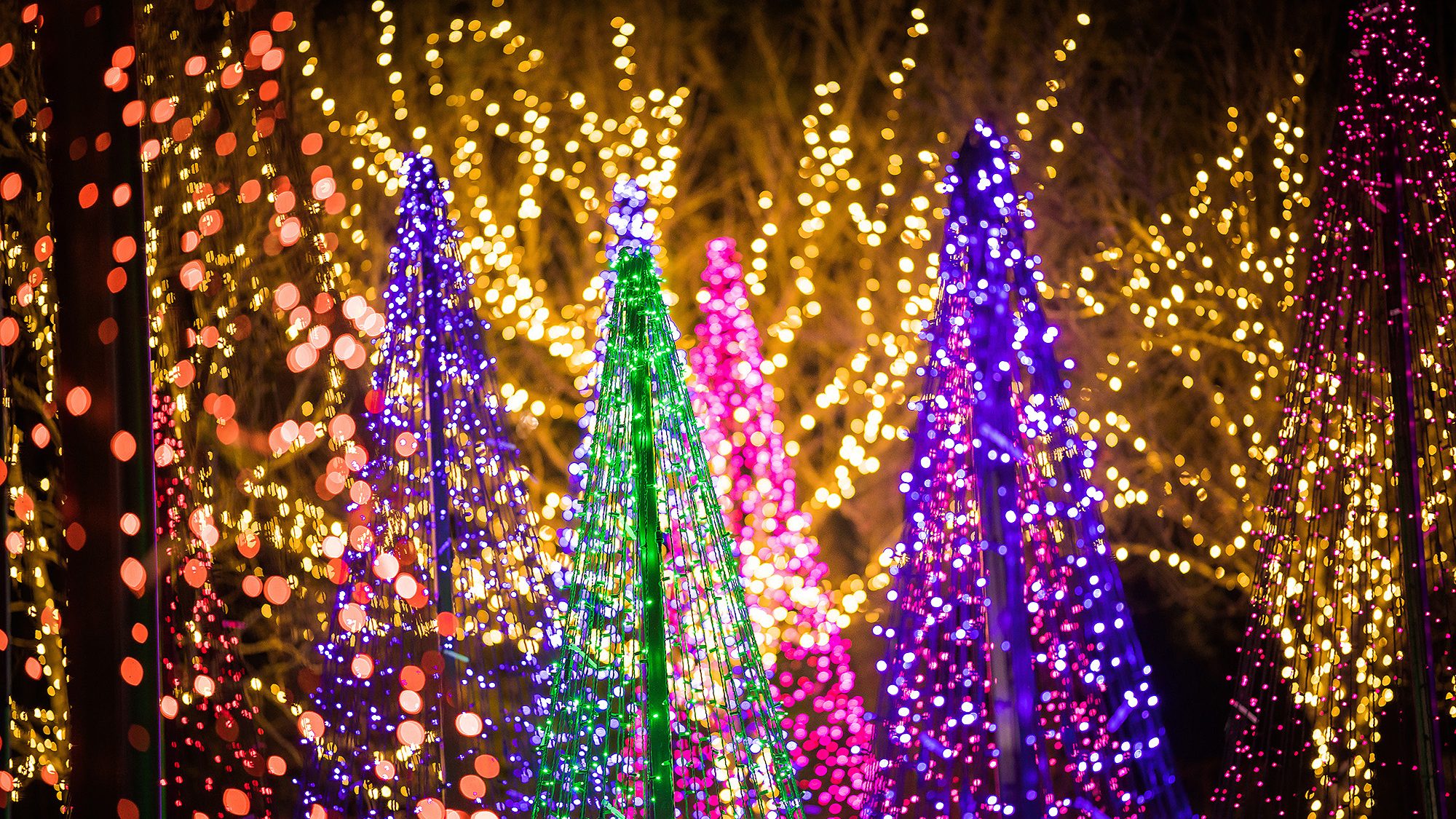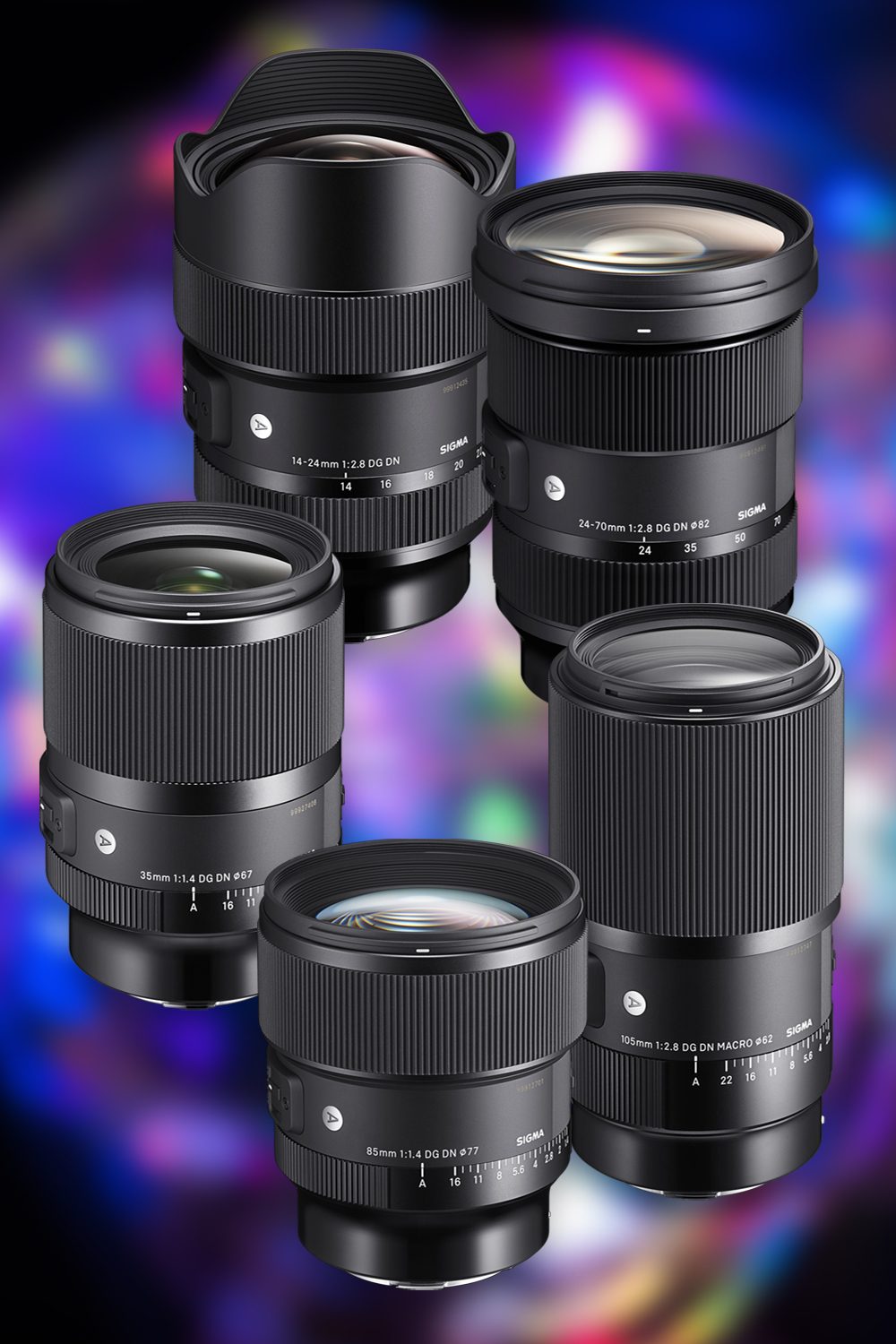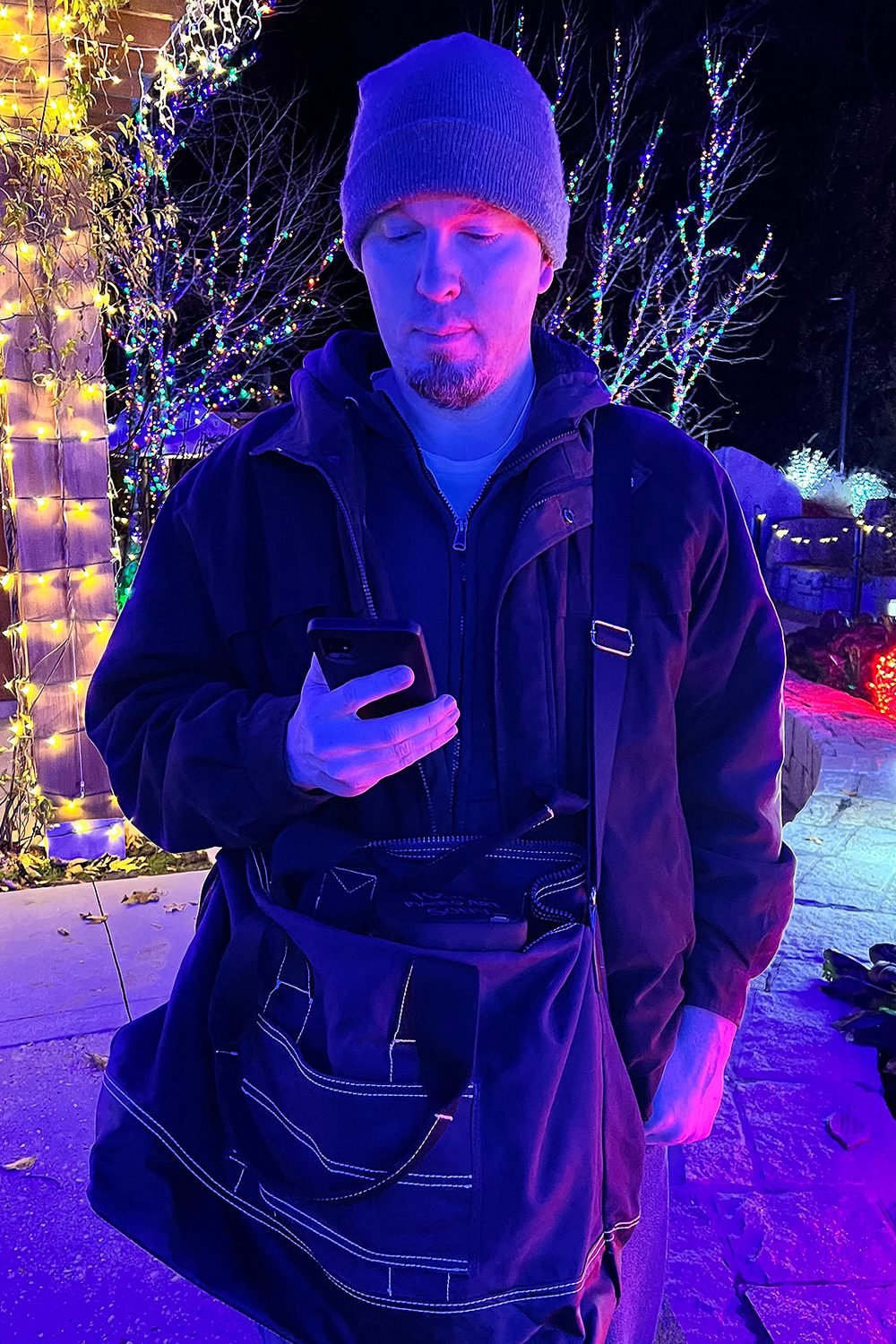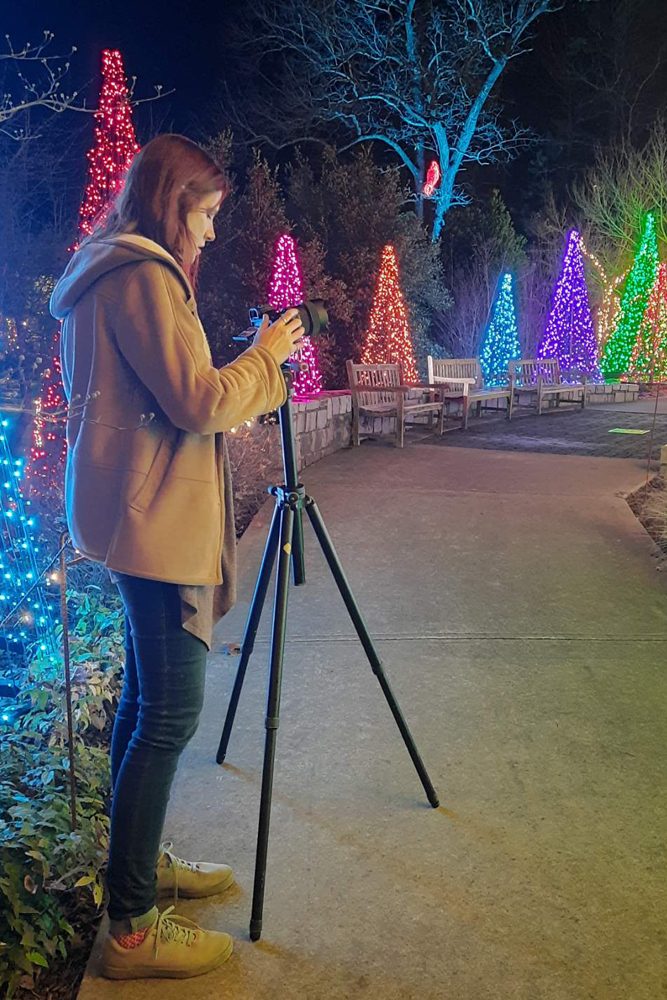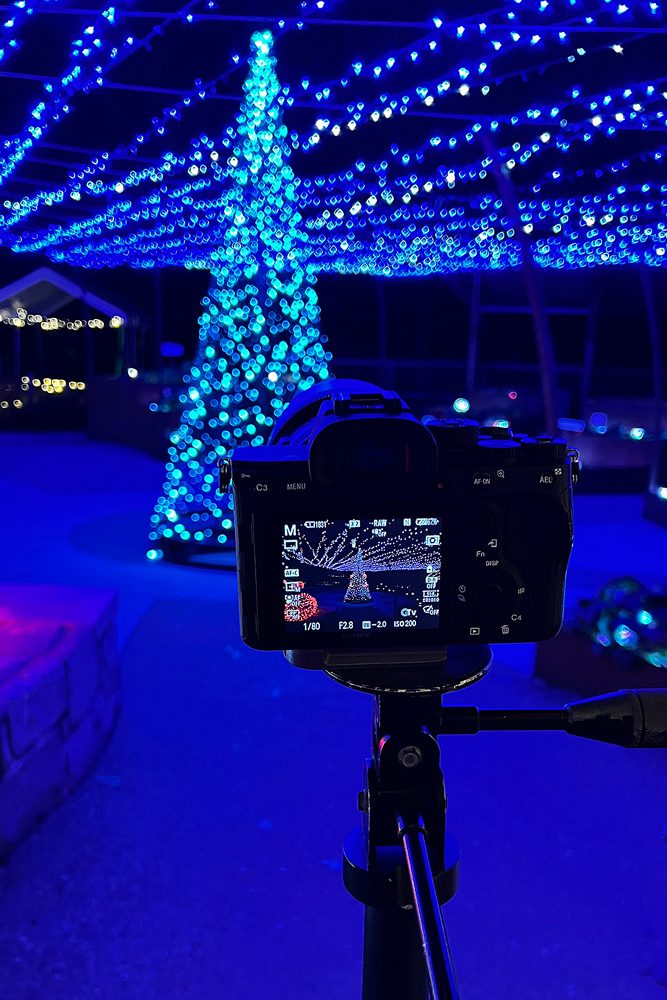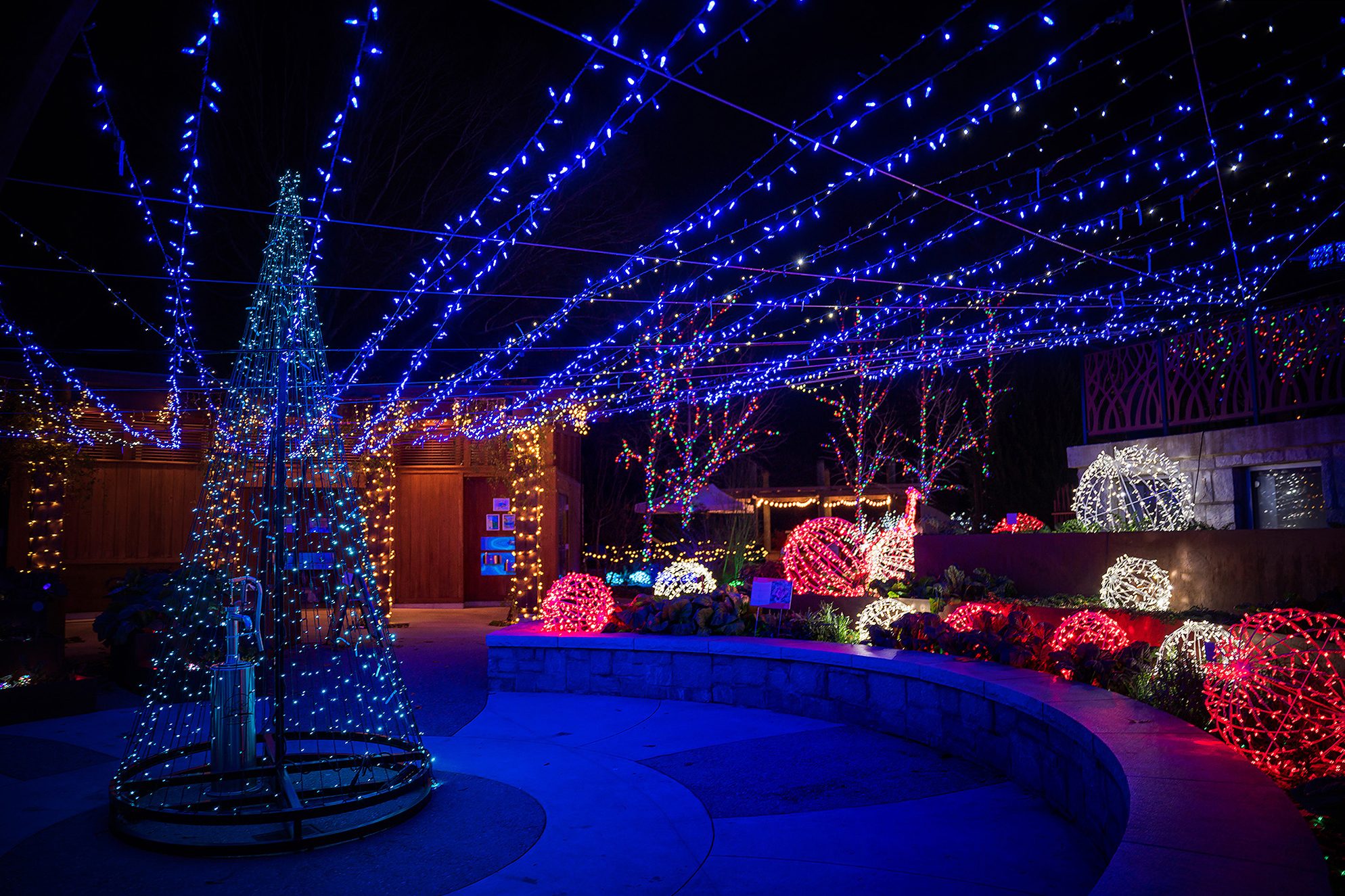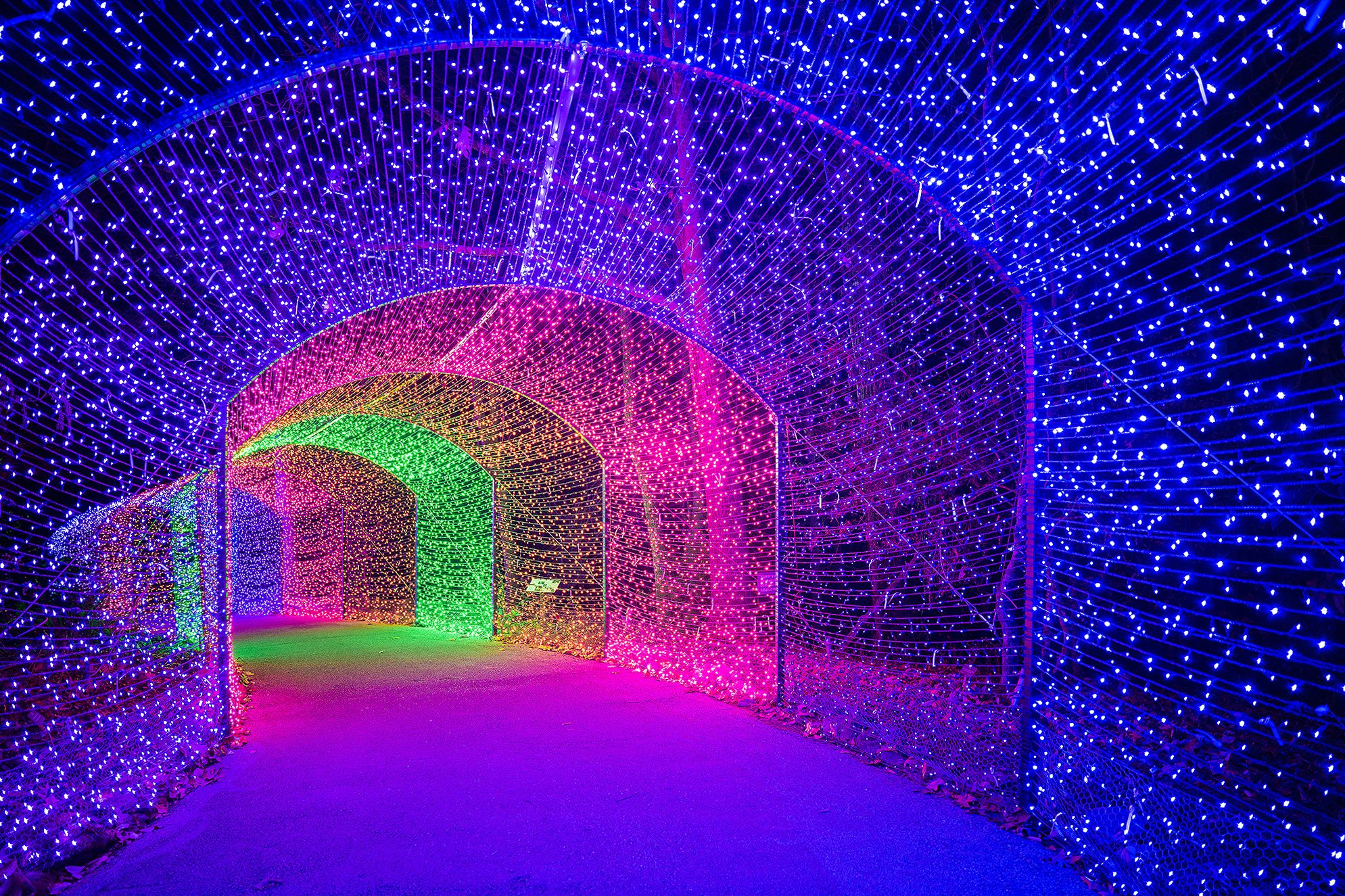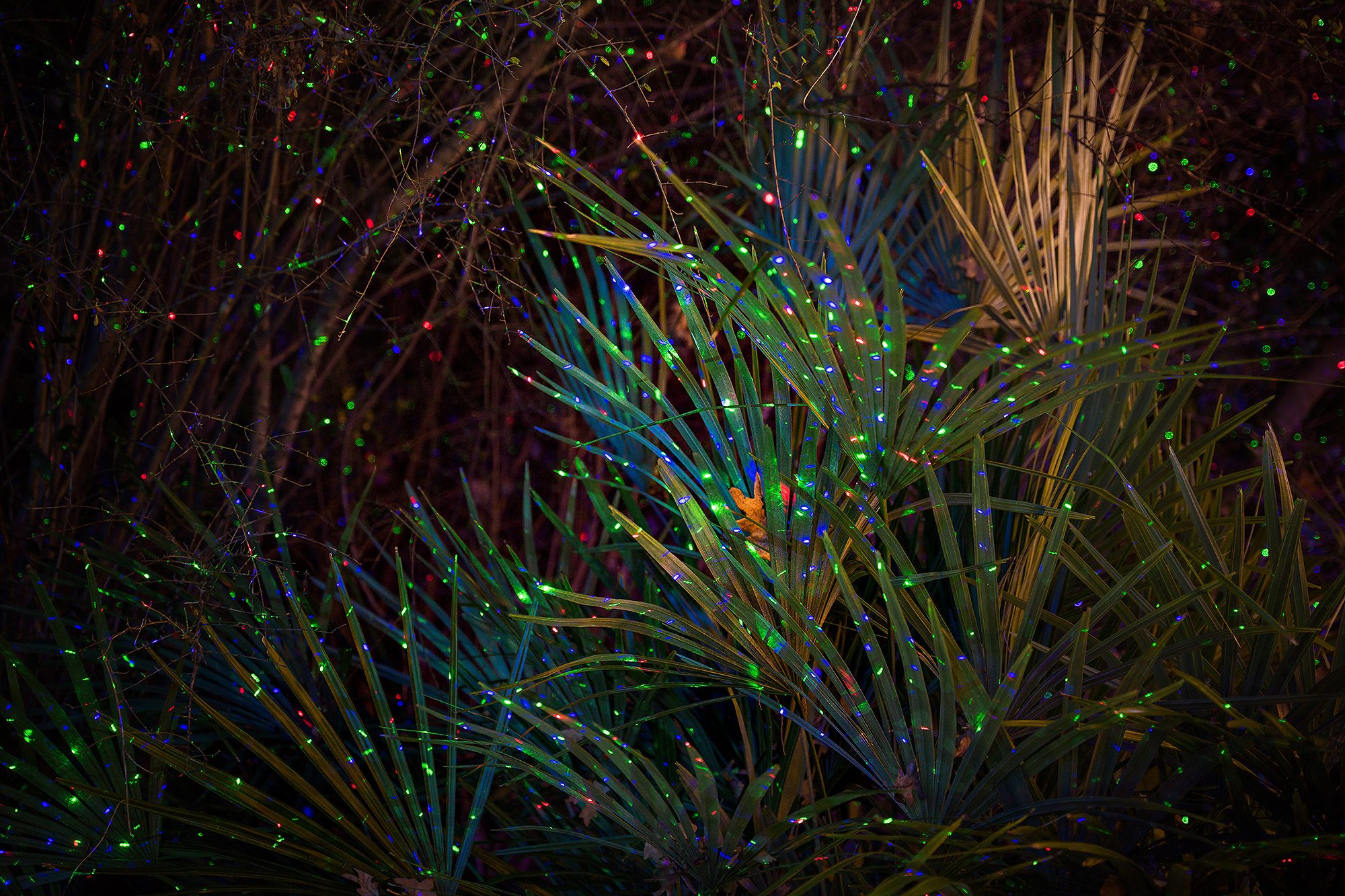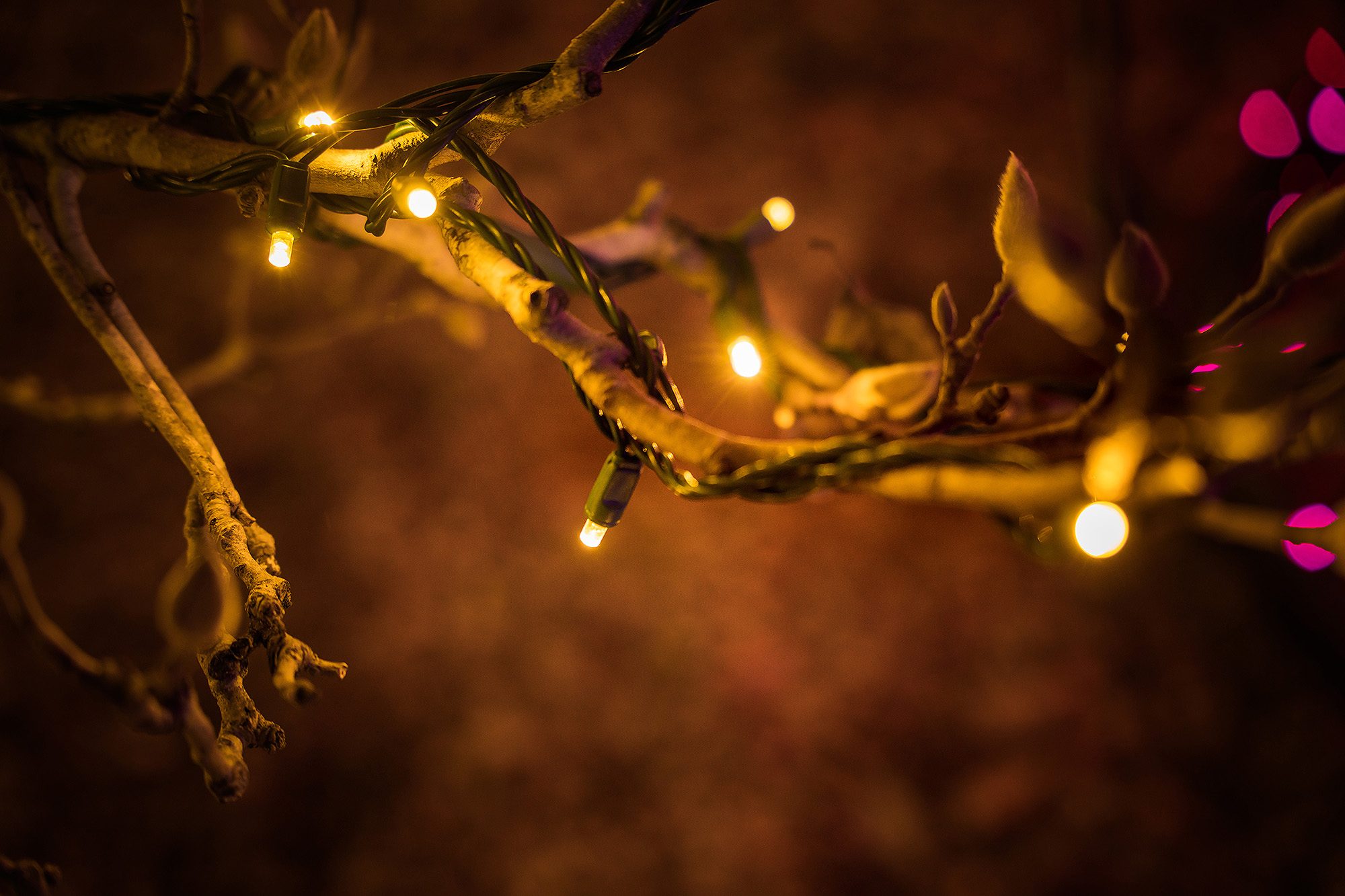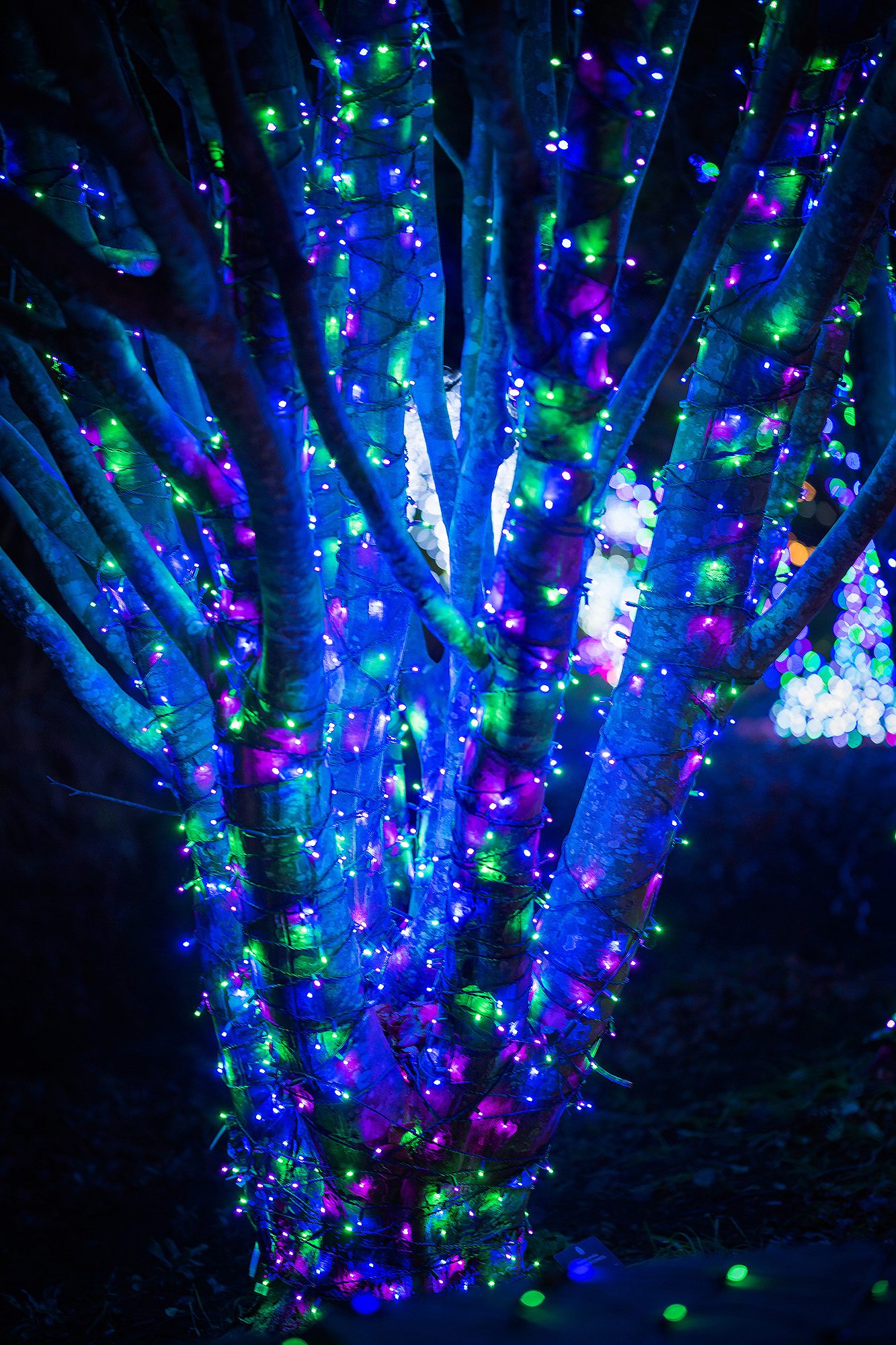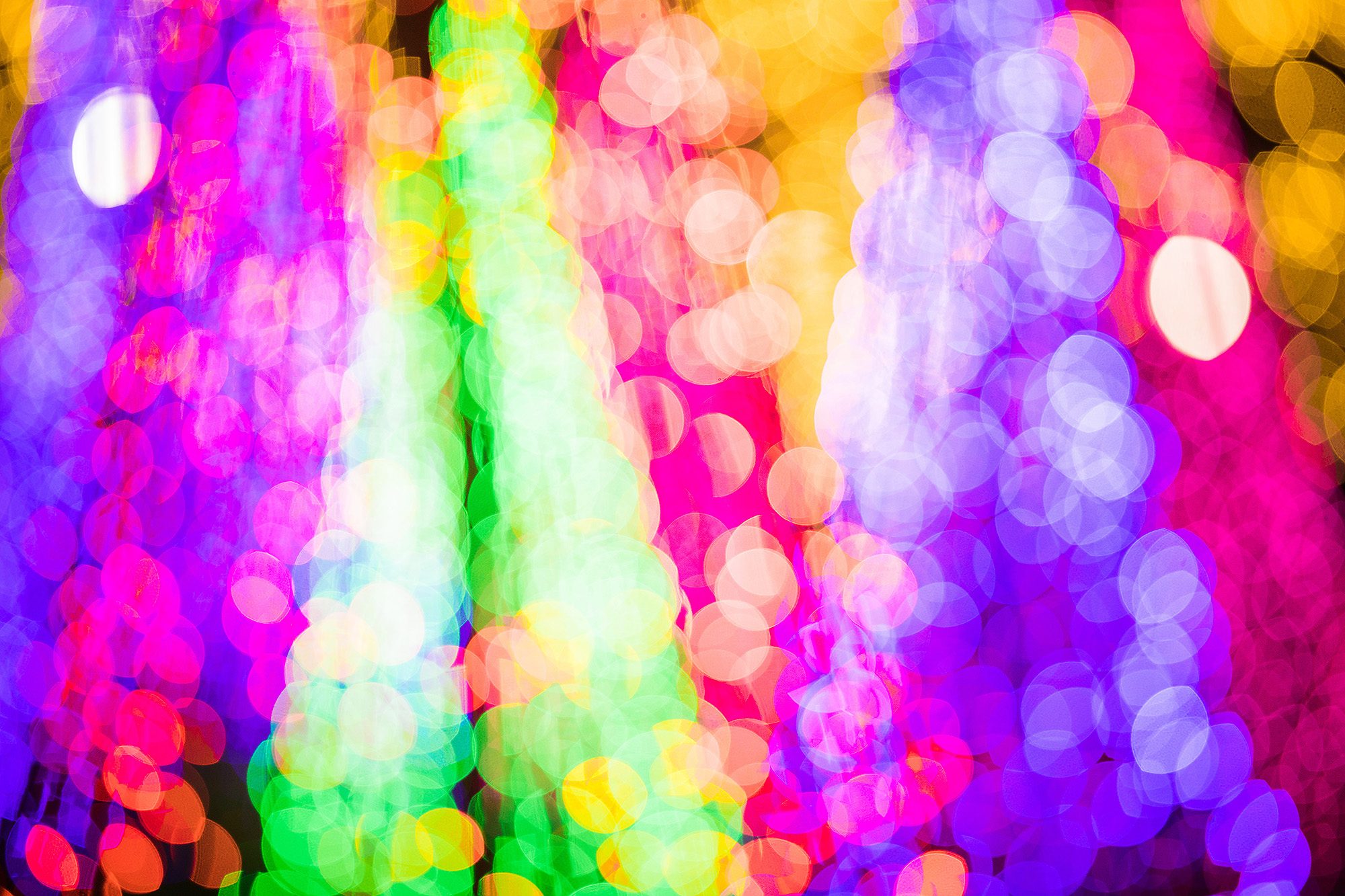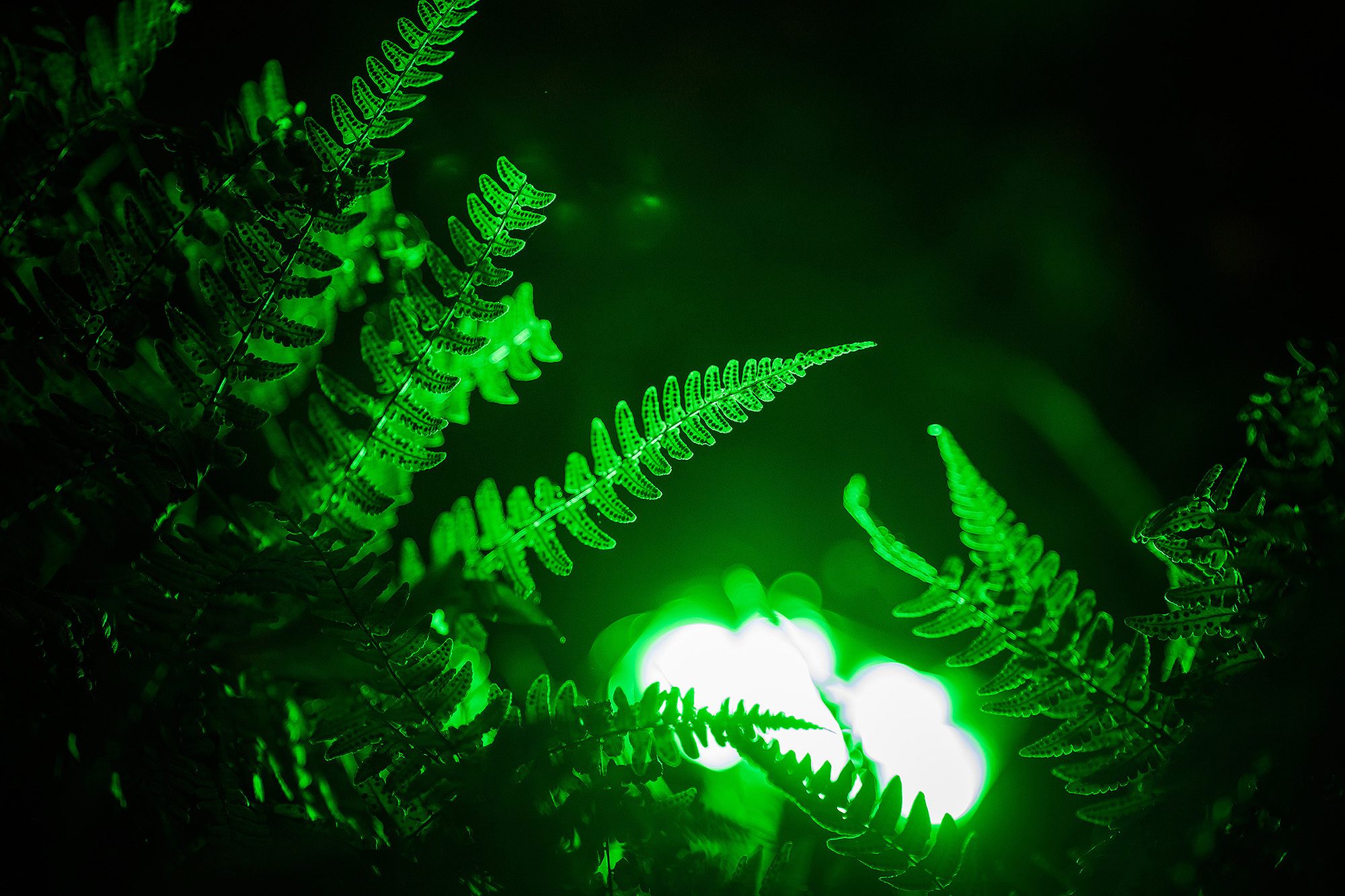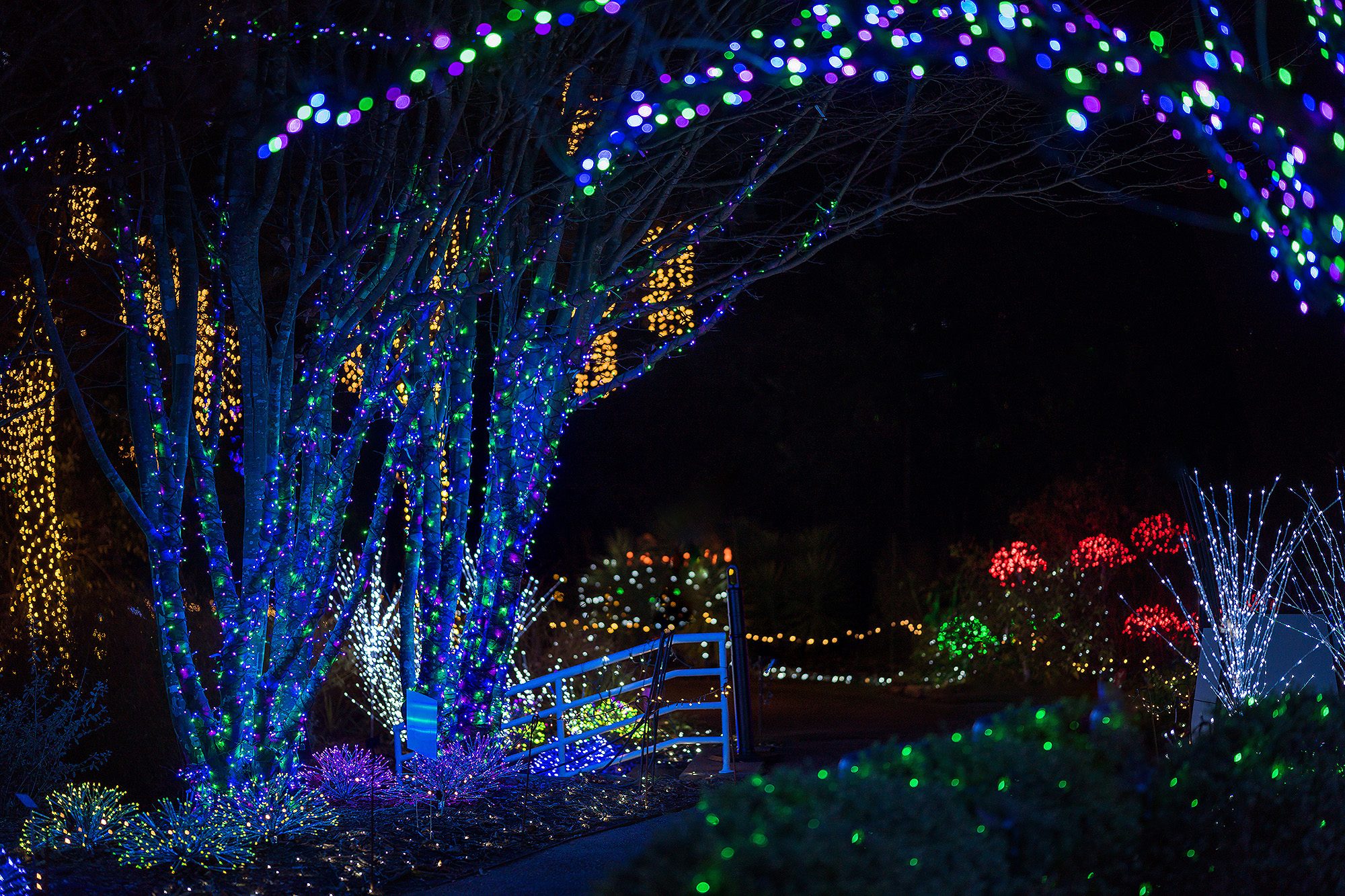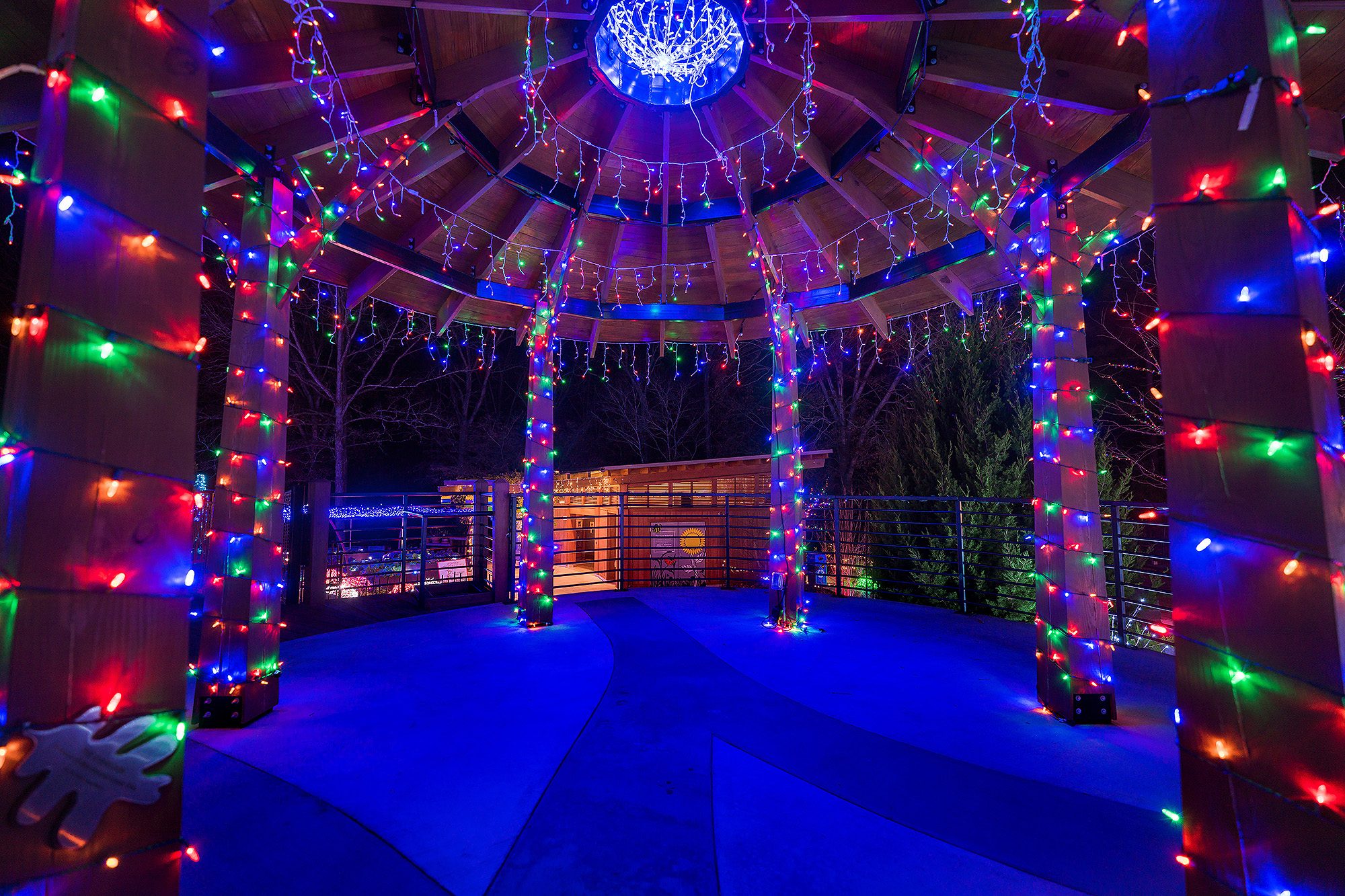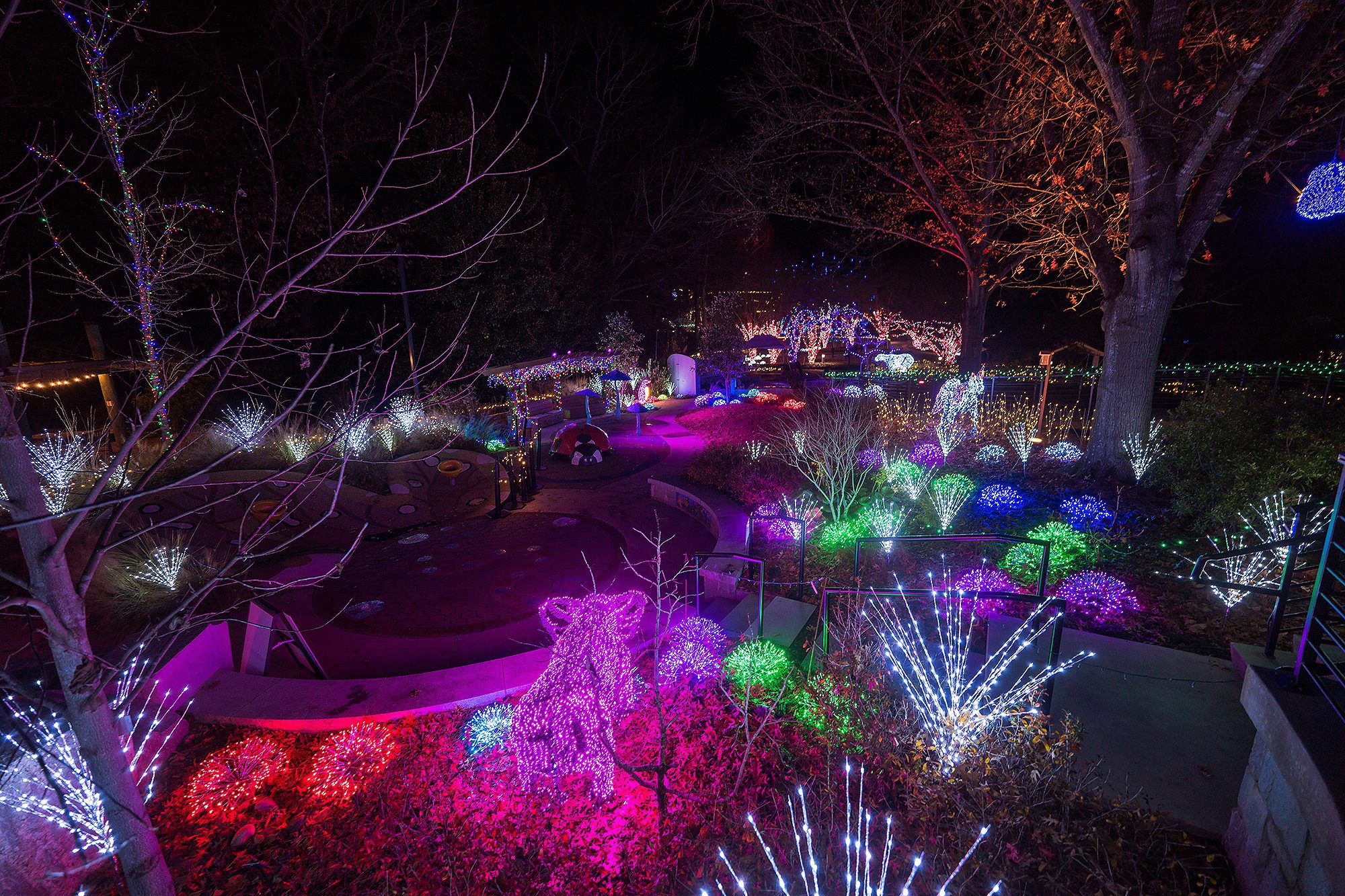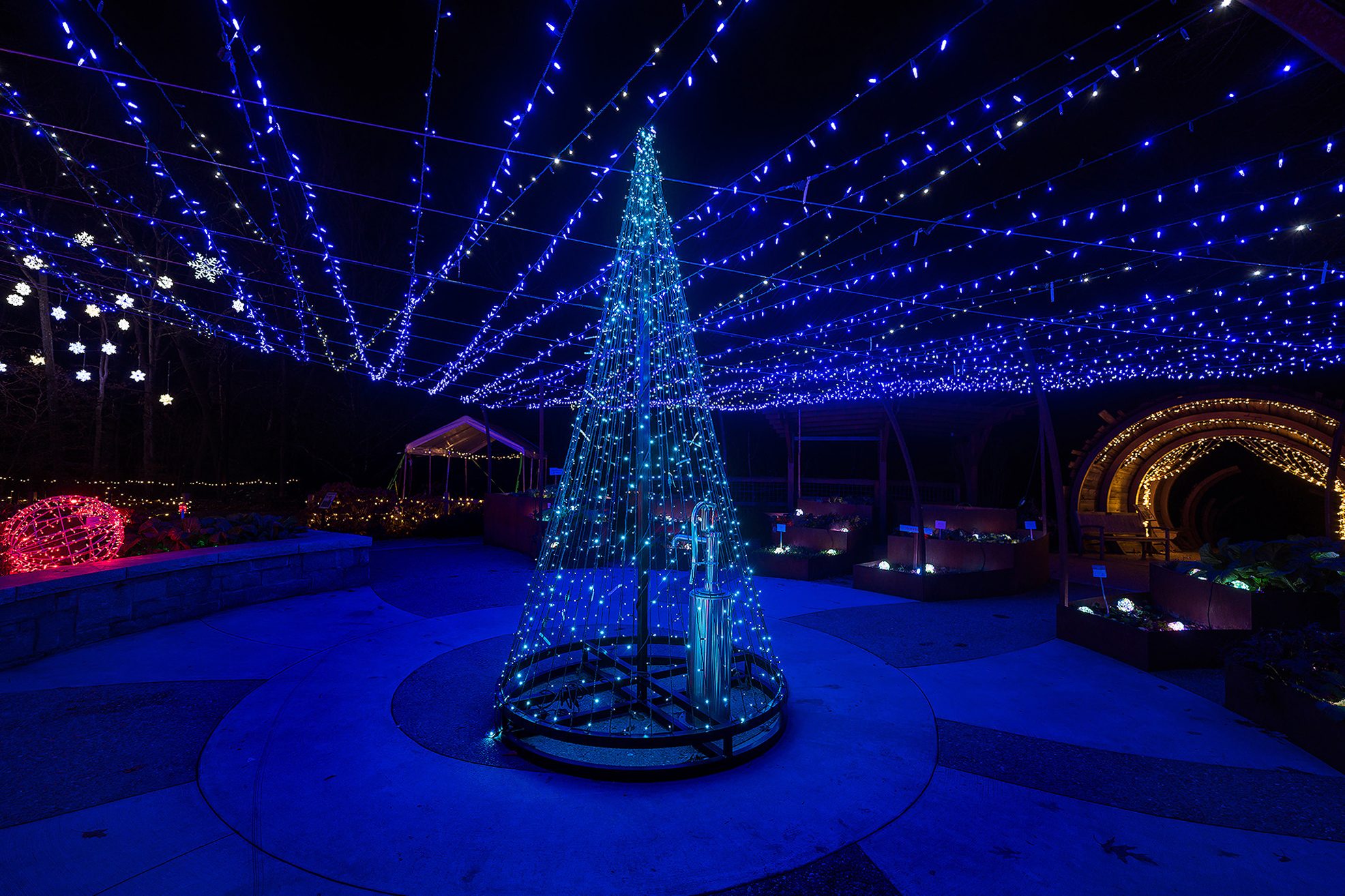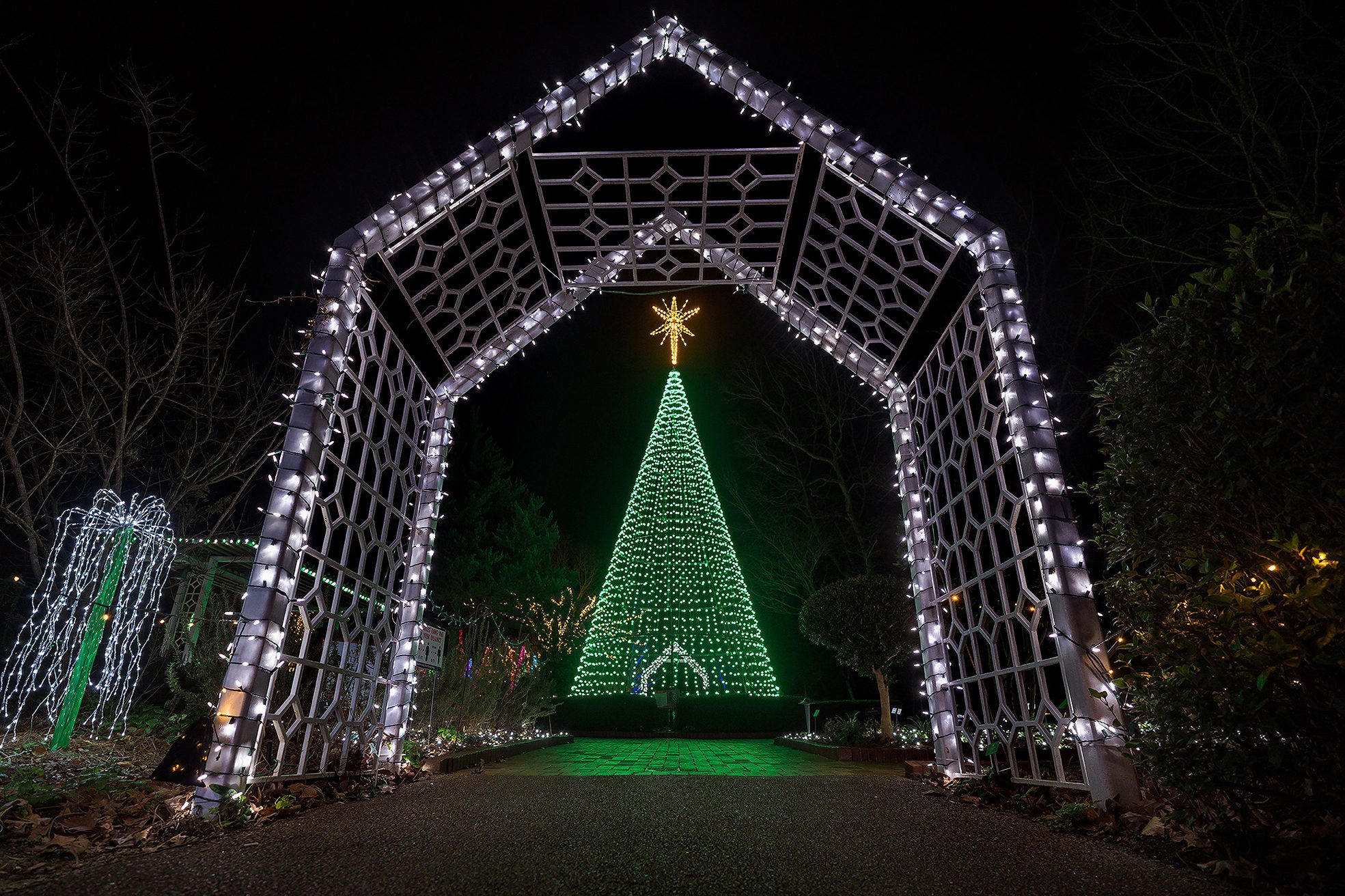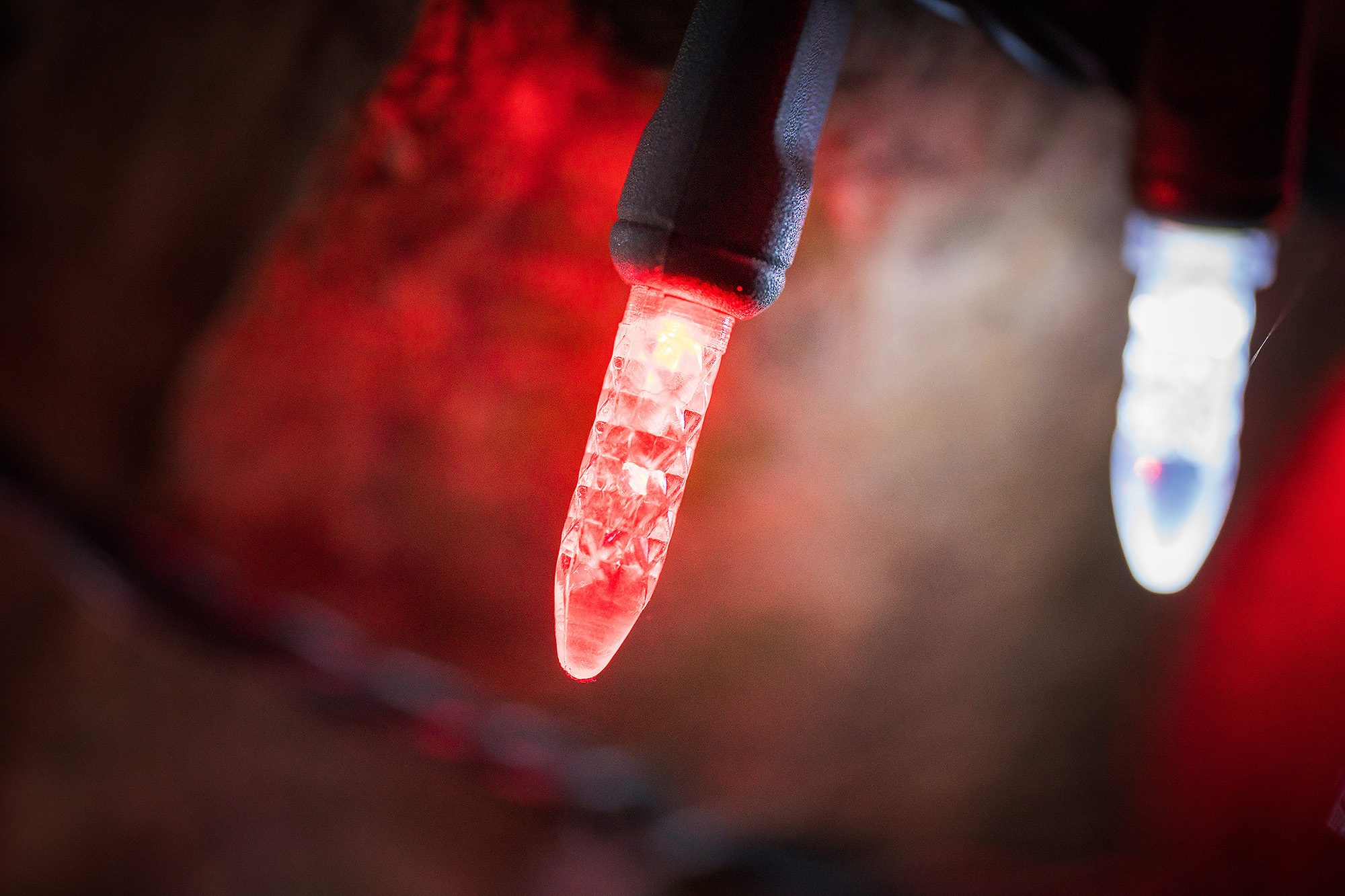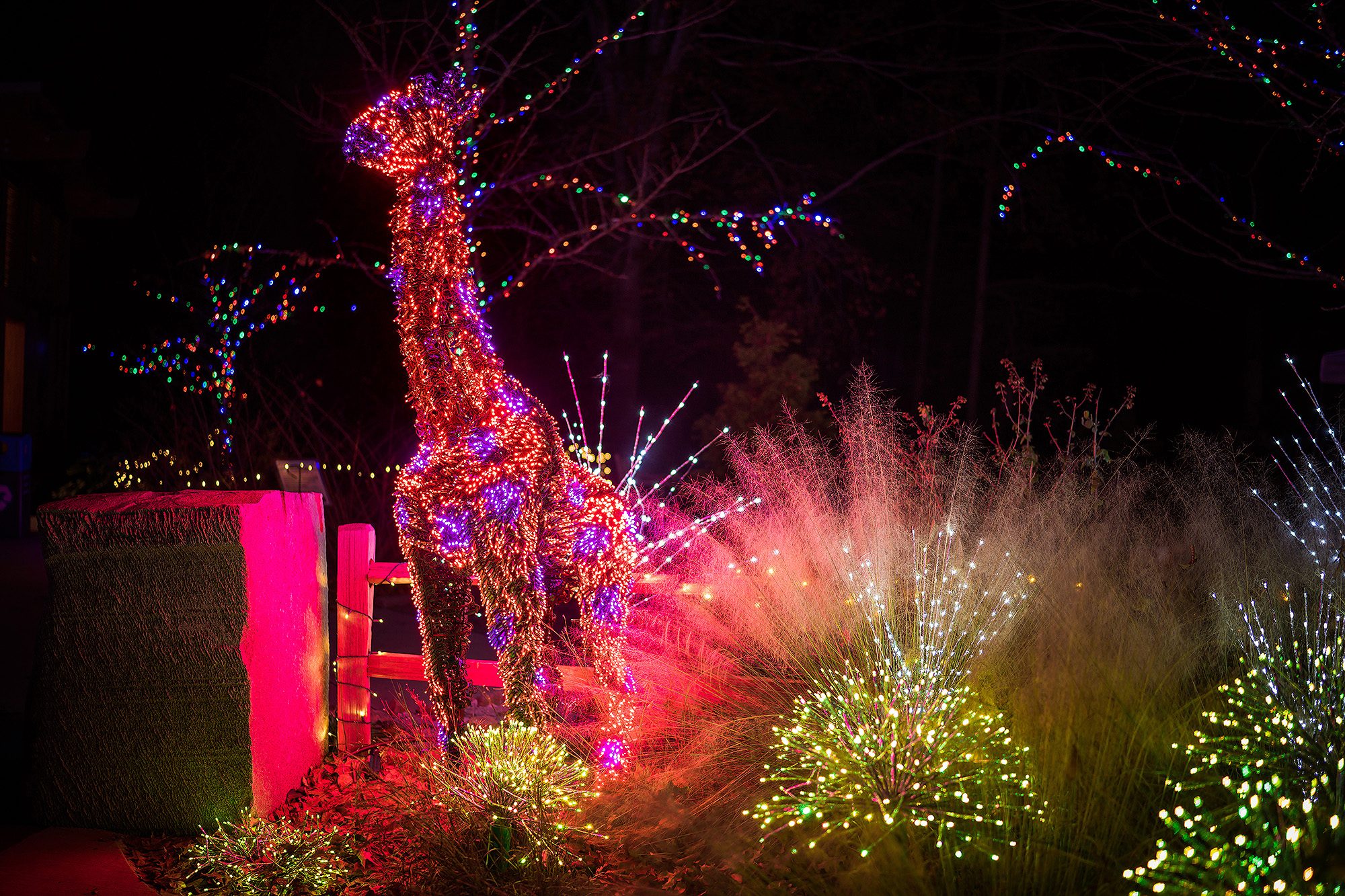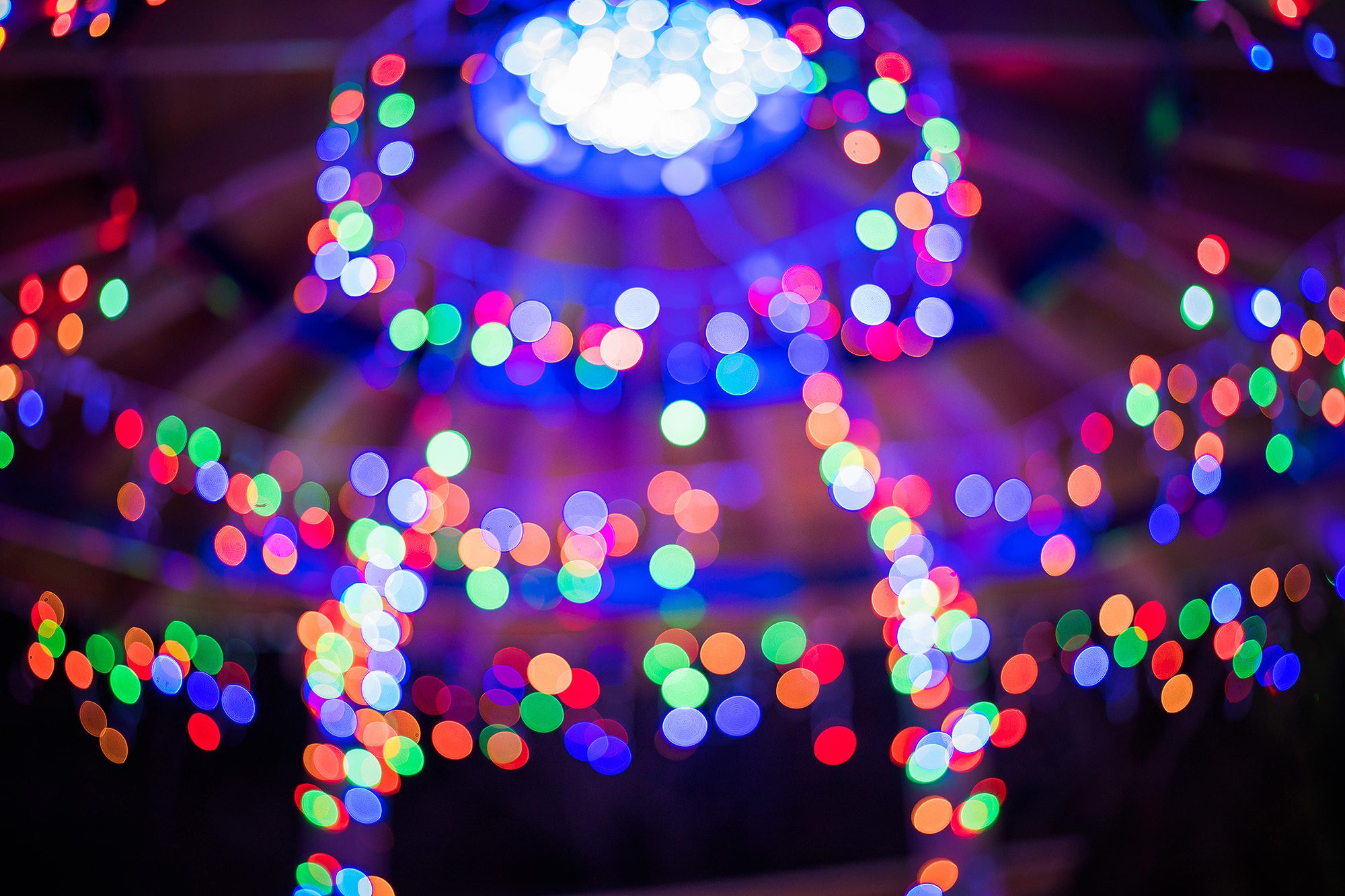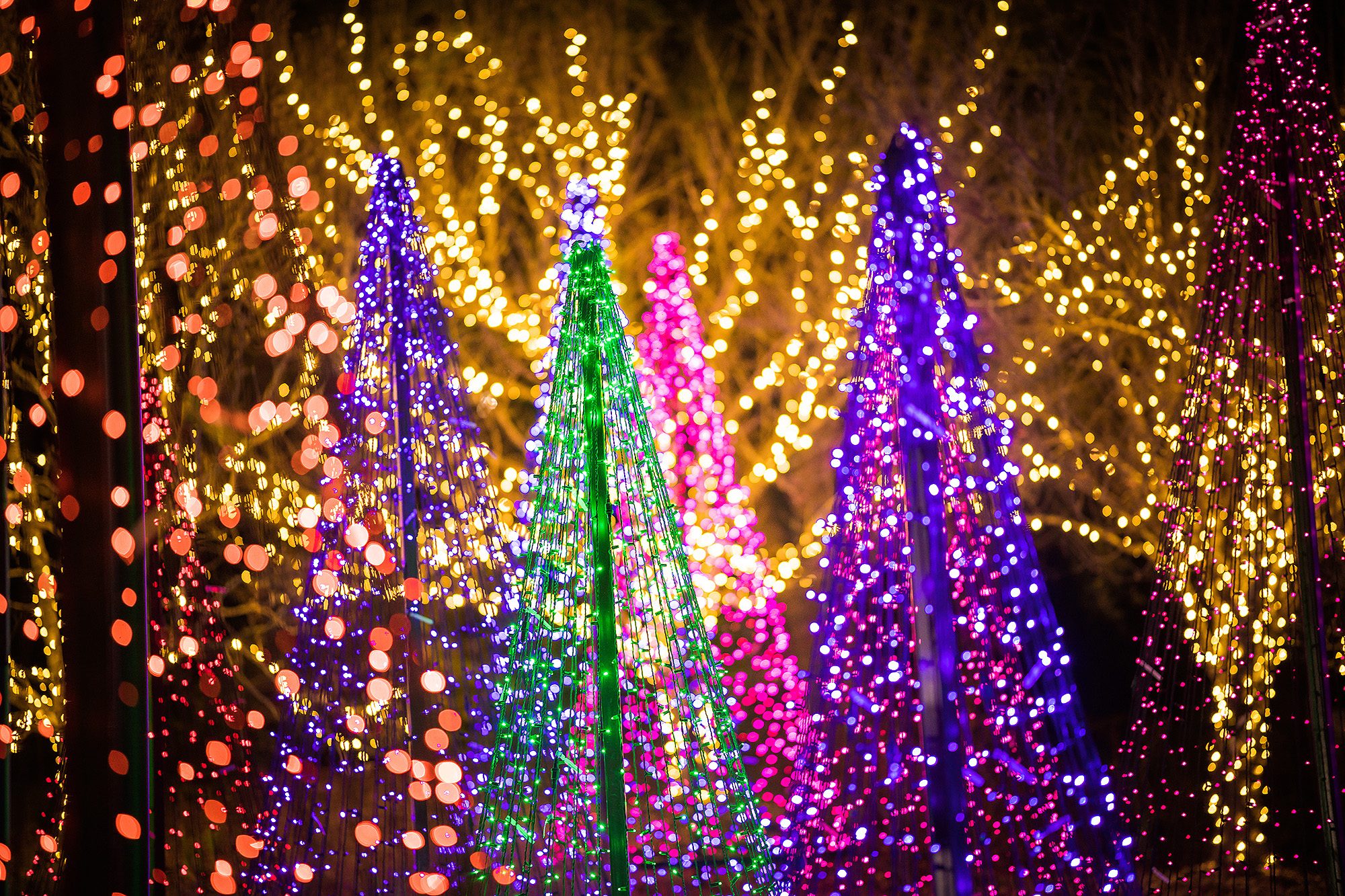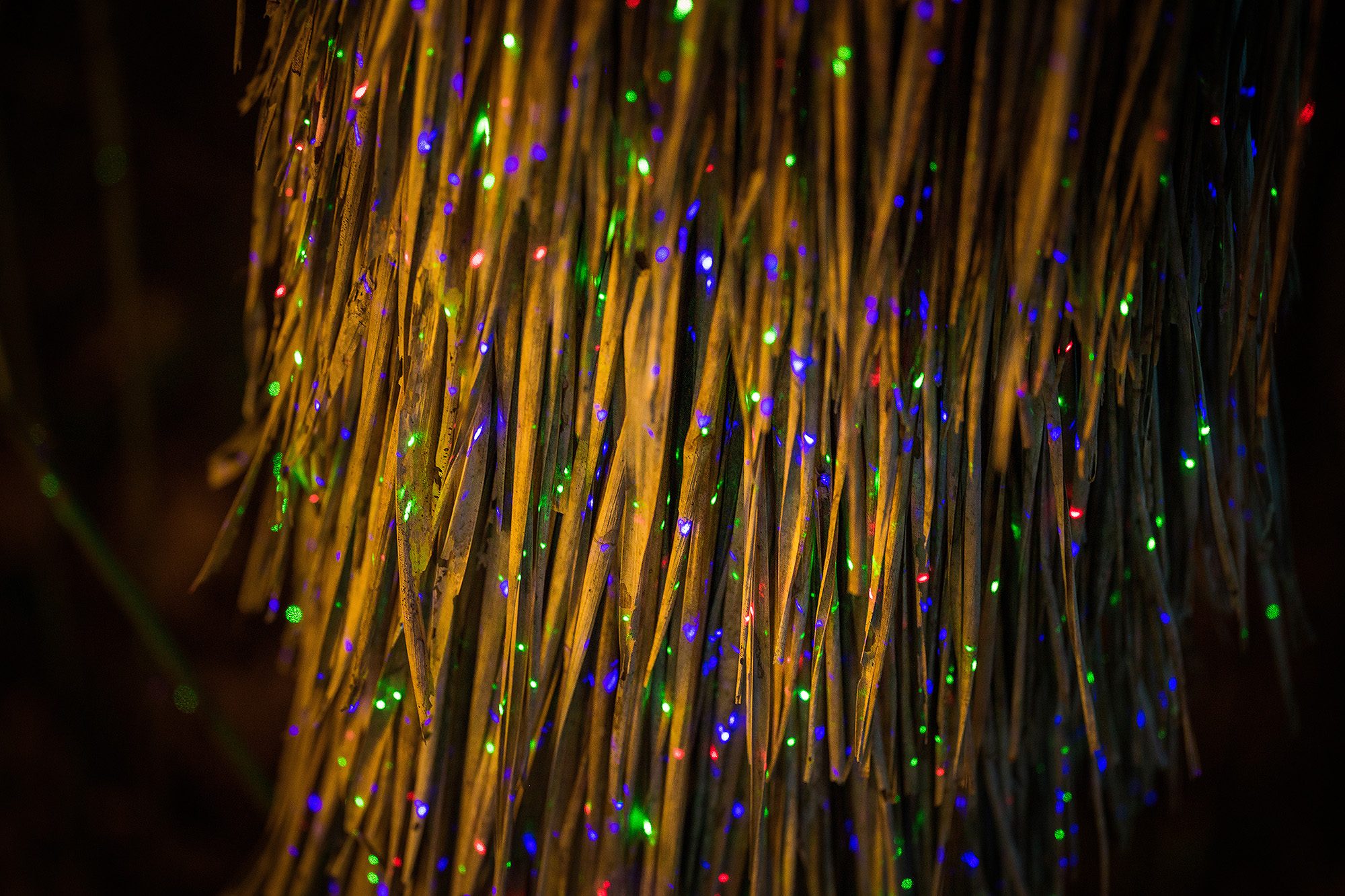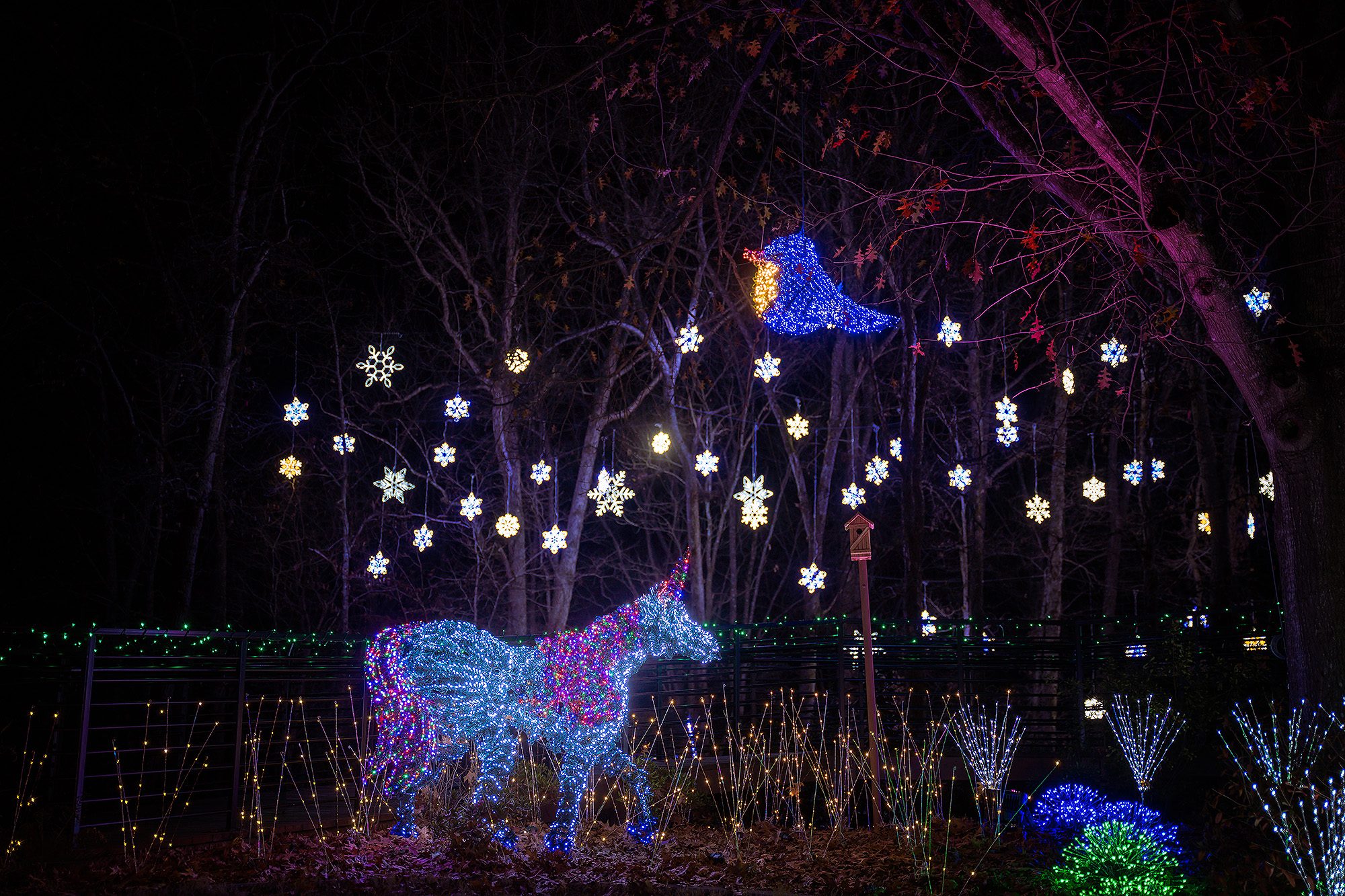My local Botanical Garden in Athens, Georgia is having its first ever annual holiday light show this year, and I’ve been watching them install everything for the past few months. At first, I wanted to see the new display without a camera in hand so I could experience the magic without any distractions. But when I did, the photographer in me inevitably found dozens of images that I wanted to capture… so a second visit was a must!
Packing My Camera Bag
As I prepared for my return trip to the Winter WonderLights, I expected that the SIGMA 14-24mm F2.8 DG DN | Art and the 24-70mm F2.8 DG DN | Art lenses were probably all I would need. I didn’t anticipate on doing any close-up photography or portraits, but since it would be dark, I packed my bag with some super-fast primes, plus a macro lens just to be safe! Specifically, I brought the 35mm F1.4 DG DN | Art, 85mm F1.4 DG DN | Art, and 105mm F2.8 DG DN Macro | Art… all designed for mirrorless cameras, with compact and lightweight construction. This would be a great chance to try all five of these lenses in very low light, and put their bokeh capabilities to good use.
I’m pretty friendly with the staff at the botanical garden, so I was actually allowed on the premises on a night without guests for the light show. So I took my husband to help carry lenses, and just packed them all into one huge bag in the handy foam pouches all SIGMA Art lenses come with. They’re super protective so I wasn’t worried about damaging them at all.
Unexpected Challenges!
I have to admit, trying to manage five lenses in one evening was a little overwhelming, and I think if I had it to do over again I would go for several nights with one or two lenses each trip. It would force me to get a bit more creative with what I was photographing. Even though my husband was carrying everything because I don’t have a lens bag with wheels, it was still a lot to swap back and forth. When we finished, it was about 38 degrees (F), and while that’s not super cold, I still couldn’t feel my fingers and I was afraid of dropping something.
I also don’t normally use a tripod, even for macro photography, but it was a necessity for this. In very low light and dropping temperatures, even when I tried to balance the camera against myself and hold steady, I ended up with smudgy lights in my photos. And of course, my tripod broke within minutes of our arrival. One of the flip locks on the legs broke and that leg would not stay extended. I actually tried to use a Band-Aid to hold it in place! Luckily, there was a survey tripod tucked away in a closet at the botanical garden. The staff member who let me in to photograph that evening also lent me the tripod for the remainder of the night, which saved many of my shots! I was able to handhold some of the faster lenses like the 35mm and the 85mm, but overall I definitely needed that tripod. Let this be a lesson to you… get a quality tripod, or don’t forget your duct tape!
Which Lenses Work Best for Photographing Holiday Lights?
The low light capabilities of all of these SIGMA lenses are brilliant. Of course, the 35mm and 85mm primes have a maximum f-stop of 1.4 and therefore will do better in low light, but F2.8 for the rest of them is pretty great as well. Each of them had no trouble capturing the holiday lights, as well as the light being cast by the surrounding displays, even though in general modern LED lights put out a bit less ambient light than traditional incandescent lights.
For me, the 24-70mm F2.8 DG DN | Art was the best all-around lens. The 24mm end was wide enough to show a lot of the display, while the 70mm end was able to provide creative compositions and close-up images. Small enough that I could handhold if needed, light enough that I didn’t feel like it was too much to carry around and still enjoy the show, but still versatile. I am not normally a zoom girl, but if I had to take only one lens, I think it would be this one.
I was actually shocked to find that my 85mm F1.4 DG DN | Art produced my favorite images of the night. The F1.4 aperture and “portrait” length allows for a lot of depth that a wide angle lens does not provide. With the 85mm, I could get some lights in focus, while having others be blurry in the background. I really enjoyed this composition ability. Maybe it’s just the portrait photographer in me, but it was entertaining to be able to create Christmas light portraits!
I would not have been able to take the 85mm as my only lens though. As nice as it was to be able to utilize a shallow depth of field, the 85mm is not nearly wide enough to fully capture the feel of the large displays. The 14-24mm F2.8 DG DN | Art was certainly the best at showing the whole display in a single frame. In fact, I found myself shooting at 14mm more than anything else throughout the night, just to get a feel for the whole show at once. I liked that even at 14mm I didn’t have much distortion on the outside of the frame. I also used this lens to include arches or other framing elements that wouldn’t show up on a longer lens. When want to tell a story with your photos, this lens really allows you to set the scene, and the focal range gives you a little bit of extra versatility.
The 105mm F2.8 DG DN Macro | Art was of course the best at close-up photos. I was surprised at how many opportunities there were for macro. Some of the smaller light bulbs used in these displays have an interesting texture, and condensation often collections on the outside of larger bulbs, making them intriguing to view up close. Thanks to the lens’ focus limiter switch, I was able to easily focus on lights just a few inches away, as well as other objects further away, without the autofocus hunting that often occurs with macro lenses.
And finally, the 35mm F1.4 DG DN | Art was best at semi-wide shots with a bit more depth. Just like the 85mm gave me a lot of bokeh, the 35mm did this as well with the added advantage of wider photos to show more of the scene. If I wanted to shoot with a single fast prime lens — and due to the low light that wouldn’t be a bad idea — this 35mm F1.4 is a great choice.
Overall Lens Performance
For all of these DG DN Art lenses, the out-of-focus lights are nice and round instead of being a polygon shape. This is a function of the aperture blades inside the lens. The more blades that make up the aperture diameter, and the more precisely shaped they are, the smoother and rounder bokeh you get. It’s a personal preference, but I like round bokeh, and I won’t buy a lens that will produce bokeh with noticeable hexagons or similar shapes. I also loved switching each lens to manual focus and getting a few frames of nothing but bokeh spots.
For each lens, I also paid attention to how quickly and accurately the lens is focused in low light. Low-light conditions make it harder for autofocus because the camera can’t “see” what you want to focus on. But these lenses had zero trouble locking on to exactly what I wanted to be in focus and doing it quickly. No focus hunting with anything, even in the darkest parts. I think this would have been even more obvious if I had gone on a night with people there and I were doing event-type portraiture. I definitely would not worry about getting focus on a toddler enjoying her very first light show.
Things I Learned
I had to remember that LED lights have a flicker. To my own eye they look constant, but to the camera they are not. I could not photograph at faster than 1/500s or it would look like some of the lights were off. I did get a few pictures with the lights “off” before I checked and remembered to bring that shutter speed down.
My favorite part of the entire show was a bundle of laser projectors. Instead of wrapping lights around the trees, these lasers sit on the ground and project bright colorful light specks on the plants around them. Because they move, they look like fireflies in the thousands! It felt like walking into the most magical fairy forest you’ve ever seen. Trying to capture that was extremely difficult because the lasers are tiny pinprick points of light. They show up well to the eye, but it’s much harder to see in a viewfinder. I think the best images I got of that area ended up being with a higher ISO and shorter shutter speed so that the ambient light could be included, but the movement of the projected lights was not recorded.
Looking back, I definitely wish that I had gone closer to twilight to have more ambient light around. As it was, the grounds were closed until it was fully dark and I didn’t have that opportunity. I think these could have been improved with a golden hour glow or even blue hour ambiance.
Final Thoughts: Photographing Holiday Lights with SIGMA DG DN Art Lenses
While there were a few hiccups along the way, the SIGMA DG DN Art lens lineup performed just as expected, and handled this challenge with ease! They are all quick to focus in low light, compact and light compared to bulkier DSLR gear, and each lens had unique benefits in this challenging situation. I especially love the bokeh quality of SIGMA Art lenses, and keeping an open mind about which lenses to bring gave me a whole new perspective on holiday light displays! Which one do you like best?

